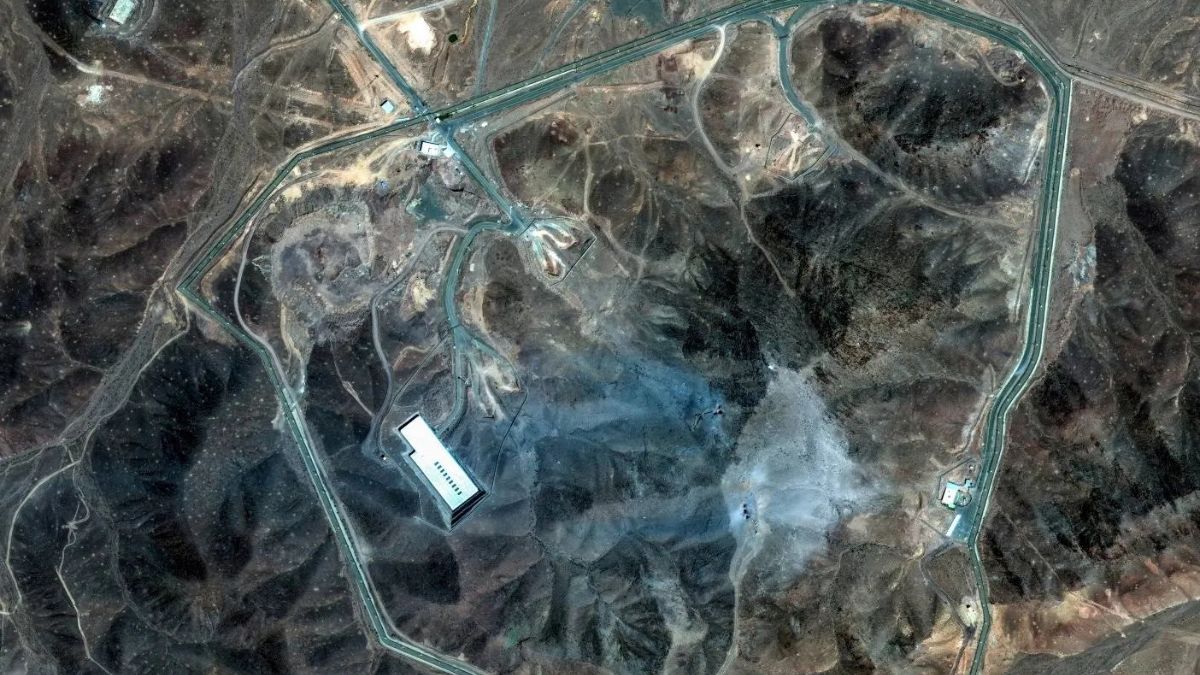Iran is intensifying construction at a fortified underground nuclear site months after US and Israeli strikes damaged parts of its enrichment infrastructure, according to reports from the Washington Post.
Three months after the coordinated strikes, new satellite images analysed by Maxar Technologies show visible construction activity at both the Natanz and Fordo enrichment facilities. The BBC reported that images taken on September 18 reveal perimeter extensions and tunneling work at the Natanz site with multiple vehicles and excavation equipment operating south of the complex.
Natanz, Iran’s primary enrichment hub housing hundreds of centrifuges underground was hit during the 12-day war in June, damaging several above-ground buildings.
At Fordo, a site built deep within a mountainside, imagery captured on September 23 shows that six craters from US strikes have been covered. However, entrances to tunnels targeted in successive US and Israeli strikes in June remain blocked, according to the BBC.
The developments follow US intelligence assessments that Iran is expanding a network of fortified facilities designed to shield its nuclear program from attack. The Washington Post reported that one of these sites, south of Natanz, is being excavated at such depth that US officials acknowledge conventional weaponry may not be able to penetrate it. This underground project has fuelled concerns in Washington about Iran’s determination to advance nuclear capabilities while limiting external visibility.
The strikes in June represented one of the most forceful attempts in years to disrupt Iran’s enrichment activities, targeting both key sites and associated infrastructure. Yet, as the latest satellite images indicate, Tehran appears committed to restoring and expanding its program, reinforcing suspicions that the campaign only delayed rather than halted its progress.
Impact Shorts
More ShortsWestern governments remain divided on how to respond. While Washington insists it is monitoring construction closely, analysts quoted by the Washington Post warned that Iran’s strategy of dispersing and hardening its nuclear facilities may ultimately reduce the effectiveness of future military action.
The continued activity at Natanz and Fordo highlighted the resilience of Iran’s nuclear program and the limits of external strikes in permanently constraining it. As reconstruction advances, international focus is likely to shift to whether diplomatic or covert measures can offset the momentum Iran has regained underground.
Meanwhile, the International Atomic Energy Agency (IAEA) faces fresh challenges in monitoring developments. While inspectors have limited access to declared sites, much of Iran’s underground construction remains opaque, leaving open questions about timelines, capacity and intent.
For now, the images from Natanz and Fordo offer a stark reminder of the cat-and-mouse dynamic that has defined the standoff over Iran’s nuclear program for nearly two decades.
The US and Israel can destroy infrastructure, but Tehran has repeatedly shown that it can rebuild and adapt. Whether the new underground facilities will eventually tip the balance in Iran’s favour or provoke yet another round of pre-emptive strikes, remains an open and pressing question for regional stability.
)